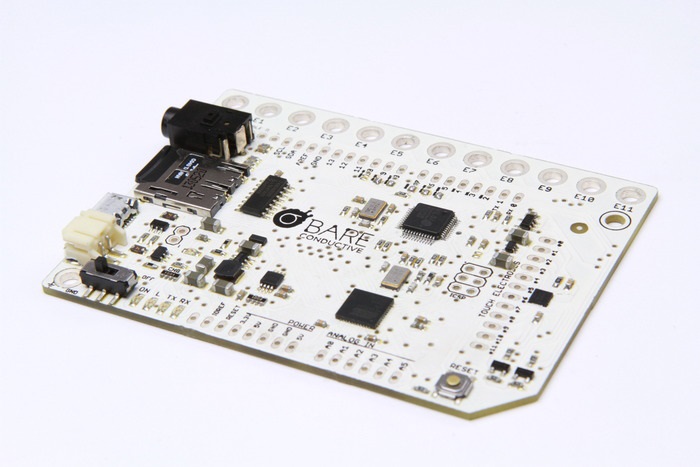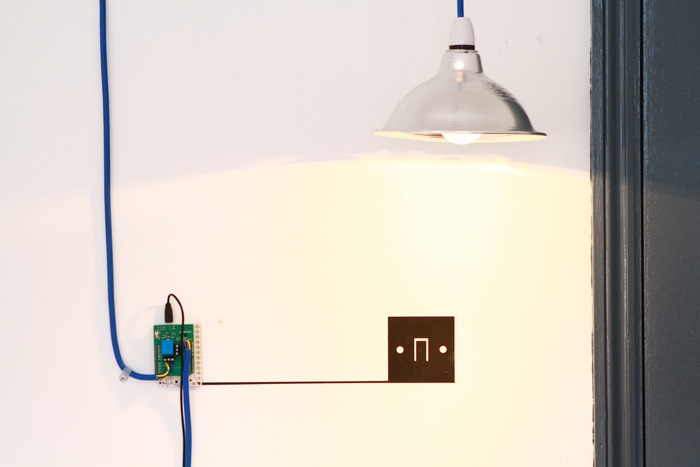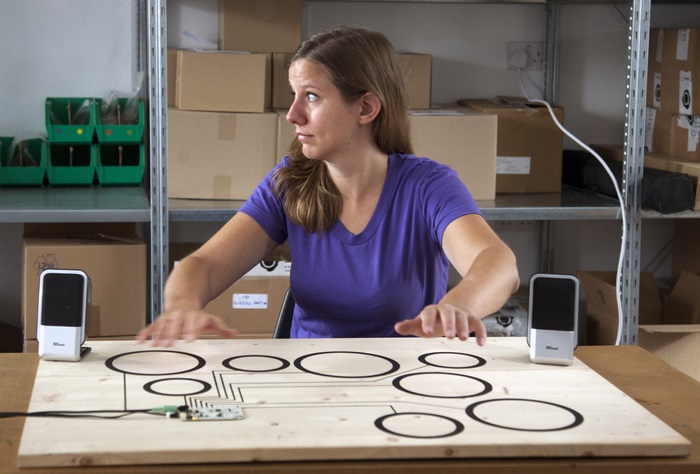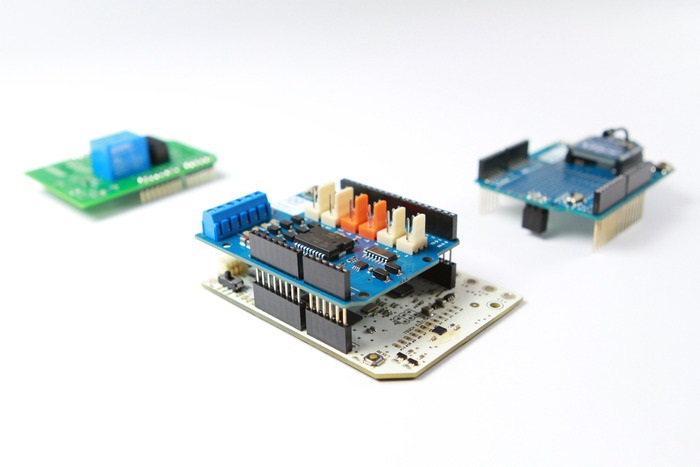Add a Touch Interface to your Hardware with Touch Board

Want to create an interactive design with touch interface? Well, the Touch Board may be just what you are looking for. Arduino compatible, the Touch Board comes with 12 capacitive touch channels and will respond to anything conductive that is connected to one of the channels. You can turn on a light, ring a doorbell, or even play midi music, all from your very own Touch Board.

The Touch Board was conceived by Bare Conductive, a UK-based design company whose first product was Electric Ink, a conductive ink that can be placed on almost any surface. The idea to make the Touch Board came from the customers themselves, and all the creative ways they thought of to use the conductive ink in in their projects. For instance, when Electric Ink is combined with the Touch Board you can do things like paint a light switch on the wall or craft an interactive whiteboard.
The Touch Board uses an Atmel ATMega32U4 processor and appears to the Arduino IDE as an Arduino Leonardo. The dedicated touch interface is a Freescale MPR121. There is also a VLSI VS1053B audio processor on board which can play MIDI sounds. The board has 32KB of flash memory, a 16MHz clock speed and 20 digital I/O pins. There are also 7 PWM channels, 12 analog input channels and 12 touch electrodes, of which 8 can be configured as extra digital inputs or outputs with PWM capability. There is also an SD card on board for storing MIDI music.

Bare Conductive has already created several projects for the Touch Board. The projects include a midi piano painted on a flat surface, a drum set which uses proximity rather than touch (the Touch Board can sense proximity up to 20cm away), a light switch, and a cardboard boom box that can be used to play midi sounds. One of the most interesting projects, though, is a talking interactive whiteboard with the alphabet painted on it. When a child touches a letter of the alphabet the board speaks the name of the letter. Source code and parts for these will be available when the Touch Board is officially released.

I spoke to Matt Johnson, one of the founders of Bare Conductive, about the Touch Board project. He stated that they “produced the board in response to customers who were having a hard time using their conductive ink as a touch sensor.” They wanted to design a “robust piece of hardware” which would allow people to “easily incorporate touch into their project using the conductive ink,” or for that matter anything else conductive.
In discussing the design challenges, Matt stated that “one of the design goals was to have components on only one side for easy incorporation into projects.” Another design goal was to make the PC board “robust enough to incorporate it into a variety of projects” without sacrificing its reliability. Matt also noted that it was a big challenge getting the graphics on the PCB, as most PCB layout packages do not lend themselves well to graphics creation.
The Touch Board is a unique product whose uses are limited only by a user’s imagination. It is a development platform too, which means it could be used to design the user interface for any device where touch or proximity needs to be incorporated.
Bare Conductive has a Kickstarter campaign for the Touch Board set to end of November 28th. At the time of writing this, they have already raised over £60,000; more than quadrupling their original goal of £15,000.
